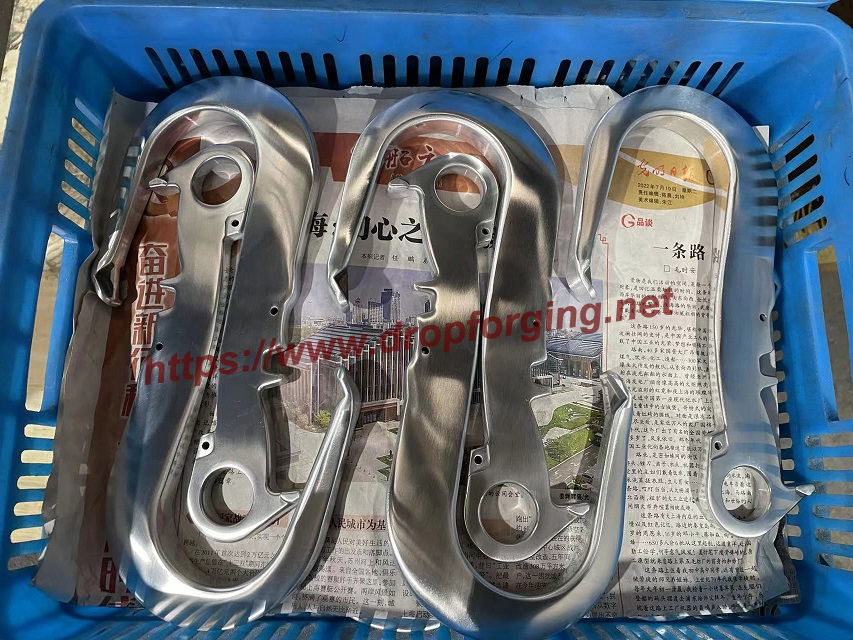Aluminum Forging of Carabiners
Carabiners are one of the most important safety equipment used in mountaineering, rock climbing, and other outdoor activities. These small, yet robust metal hooks, are often used to secure ropes, harnesses, and other gear, and are crucial in ensuring the safety of climbers and hikers. Aluminum forging is a popular manufacturing process used to produce carabiners due to its many advantages. In this article, we will explore the process of aluminum forging and its benefits for carabiner production.
What is Aluminum Forging?
Forging is a manufacturing process that involves shaping metal by applying pressure to it. Aluminum forging, specifically, is the process of shaping aluminum into various forms, such as carabiners, using compressive forces. In this process, a piece of aluminum is placed between two dies and subjected to high-pressure forces until it takes the shape of the die. The die is a tool that is specially designed to form the metal into a particular shape. The process is often done at high temperatures to make the metal more malleable and easier to shape.
Aluminum Forging Process for Carabiners

The process of aluminum forging for carabiners involves several steps. The first step is to heat the aluminum to a specific temperature. This is done in a furnace, where the temperature is carefully controlled to ensure that the aluminum reaches the correct temperature for forging. The temperature at which the aluminum is heated depends on the specific alloy being used and the desired properties of the final product.
Once the aluminum has been heated to the correct temperature, it is placed between the dies of a forging press. The forging press applies pressure to the aluminum, forcing it to take the shape of the dies. The pressure applied is carefully controlled to ensure that the metal is not overworked, which can lead to defects in the final product.
After the aluminum has been forged into the desired shape, it is heat-treated to increase its strength and durability. The heat treatment process involves heating the metal to a specific temperature and then rapidly cooling it to lock in the desired properties. The specific heat treatment used depends on the alloy being used and the properties desired for the final product.
Finally, the forged and heat-treated carabiners are finished using a variety of techniques, such as polishing and anodizing. Anodizing is a process that involves coating the metal with a protective layer that helps to prevent corrosion and increase its lifespan. The finished carabiners can then be inspected for quality to ensure that they meet the required specifications and standards.
Aluminum Forging Alloy of Carabiner
The choice of aluminum forging alloy for a carabiner depends on the intended use and desired properties. Generally, carabiners used for rock climbing or other high-load applications require a higher strength and durability than those used for lighter-duty purposes.
One commonly used aluminum forging alloy for carabiners is 7075-T6, which has a high strength-to-weight ratio and excellent fatigue resistance. This alloy is often used for climbing carabiners because of its ability to withstand repeated loading and unloading without deformation or failure.
Another aluminum forging alloy that may be used for carabiners is 6061-T6, which has good strength and corrosion resistance. However, it may not be as strong or durable as 7075-T6, and may not be suitable for heavy-duty climbing applications.
It's important to note that the choice of aluminum forging alloy is just one factor to consider when selecting a carabiner. Other factors, such as the gate mechanism, shape, and size, can also impact the carabiner's performance and suitability for a particular use.
Benefits of Aluminum Forging for Carabiners
There are several advantages to using aluminum forging to produce carabiners. One of the most significant benefits is that aluminum forging produces parts that are extremely strong and durable. Aluminum forgings have a high strength-to-weight ratio, making them ideal for use in carabiners. Forging also produces parts that are free from porosity, which can weaken the metal and reduce its strength. This makes aluminum forgings ideal for use in safety-critical applications, such as carabiners.
Another benefit of aluminum forging is that it produces parts with excellent surface finish and dimensional accuracy. This is because the process allows for precise control over the shape of the metal. The dies used in the forging process can be designed to produce parts with very tight tolerances, which is essential for carabiners, as they need to be able to fit securely and precisely with other equipment. The smooth surface finish of aluminum forgings also makes them less prone to corrosion, which is important for carabiners used in outdoor environments.
Aluminum forging also allows for the production of parts in high volumes, which makes it ideal for mass production of carabiners. The process is highly automated, and with the use of modern manufacturing techniques, it is possible to produce carabiners in large quantities quickly and efficiently. This makes aluminum forging a cost-effective method of producing carabiners.
Contact CFS Forge Today
With over 20 years of experience in the industry, CFS Forge has established itself as a leading manufacturer of forged metal products, including carabiners.
If you're in need of high-quality forged aluminum carabiners, contact CFS Forge today. Our team of experts can help you choose the right carabiner for your needs and provide you with a quote for your order.
With its commitment to quality and customer service, CFS Forge is the ideal partner for all of your forged aluminum carabiner manufacturing needs.
Related Articles:
- Forged Aluminum Motorcycle Footpegs
- Forged Aluminum Snap Hooks
- Forged Aluminum ATV Wheel Spacers
- Forged Aluminum Control Arms


 sales@dropforging.net
sales@dropforging.net